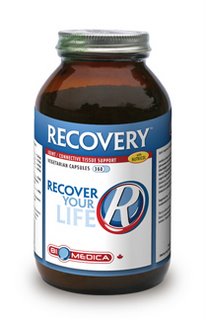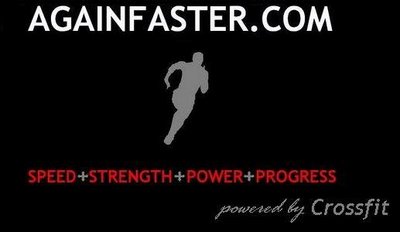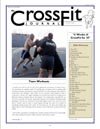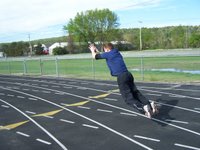Thinking About Performing II

The three of you who've read Again Faster since the beginning of May probably remember my article, "Thinking About Perfoming". For the rest of you, the original is available using the archive link to the right--it was posted on May 4th.
I was looking for a way to track my recovery levels and intensity as they related to workout difficulty and the time since I last worked out. I now have a month's worth of data.
I have about 30 entries that look like this: R1W4E5T48
R# is perceived recovery level: 1 (absolutely fresh)- 5(totally sore)
W# is perceived workout difficulty: 1 (easy) - 5 (insanity)
E# is my intensity: 1 (sleepwalking) - 5 (full bore intensity)
T# is number of hours since the last workout
The scientists among you will note that 30 entries is not nearly enough to establish statistical significance for any of my findings. I am making no such claims, so don't start any sh*t.
First, the obvious. There is a linear relationship between time since last workout and perceived recovery. More time, more recovery. I didn't need to collect any data to figure that one out. I also found that a greater recovery time translated into greater intensity during exercise.
Interestingly, I found that perceived recovery has little bearing on intensity. Common sense would dictate that the better an athlete feels, the harder he/she will work. In my case, this maxim didn't hold.
There were many instances where I felt like I was ready to rock, assigning a perceived recovery of 1 or 2, but my intensity languished. In these cases, the time since my last workout was invariably less than 20 hours.
Why would I feel recovered and be unable to maintain good intensity?
My perception of recovery is directly related to muscle soreness and joint stiffness. If nothing hurts, I feel like I'm ready to train.
This may not be the case--DOMS (delayed onset muscle soreness) typically takes a day or two to set in. If I have a rest day, followed by two successive workouts, I may not feel the effects of the first workout by the time I start the second. The physiological damage from the first workout is not symptomatic when I begin the second workout, but it's still there. As a result, I cannot go at full intensity.
This is a theory based on a single case study--me. The data is not robust enough to prove a damn thing. Nonetheless, I believe this is interesting, and worth looking into.
Anecdotally, I found that every time I rated my workout intensity at 4 or 5 (full bore), 24+ hours had passed since my last workout. Recovery and intensity may have less to do with how you feel, and more to do with the time your body has had to repair itself.
I encourage you to start collecting data on various metrics that relate to your workouts. I'm always interested in new ways to quantify athletic training--if you have any insights, please drop me a line. As the data accumulates, we may find some universal truths regarding recovery and intensity. That would be a hell of a lot more useful than my bullsh*t...

The three of you who've read Again Faster since the beginning of May probably remember my article, "Thinking About Perfoming". For the rest of you, the original is available using the archive link to the right--it was posted on May 4th.
I was looking for a way to track my recovery levels and intensity as they related to workout difficulty and the time since I last worked out. I now have a month's worth of data.
I have about 30 entries that look like this: R1W4E5T48
R# is perceived recovery level: 1 (absolutely fresh)- 5(totally sore)
W# is perceived workout difficulty: 1 (easy) - 5 (insanity)
E# is my intensity: 1 (sleepwalking) - 5 (full bore intensity)
T# is number of hours since the last workout
The scientists among you will note that 30 entries is not nearly enough to establish statistical significance for any of my findings. I am making no such claims, so don't start any sh*t.
First, the obvious. There is a linear relationship between time since last workout and perceived recovery. More time, more recovery. I didn't need to collect any data to figure that one out. I also found that a greater recovery time translated into greater intensity during exercise.
Interestingly, I found that perceived recovery has little bearing on intensity. Common sense would dictate that the better an athlete feels, the harder he/she will work. In my case, this maxim didn't hold.
There were many instances where I felt like I was ready to rock, assigning a perceived recovery of 1 or 2, but my intensity languished. In these cases, the time since my last workout was invariably less than 20 hours.
Why would I feel recovered and be unable to maintain good intensity?
My perception of recovery is directly related to muscle soreness and joint stiffness. If nothing hurts, I feel like I'm ready to train.
This may not be the case--DOMS (delayed onset muscle soreness) typically takes a day or two to set in. If I have a rest day, followed by two successive workouts, I may not feel the effects of the first workout by the time I start the second. The physiological damage from the first workout is not symptomatic when I begin the second workout, but it's still there. As a result, I cannot go at full intensity.
This is a theory based on a single case study--me. The data is not robust enough to prove a damn thing. Nonetheless, I believe this is interesting, and worth looking into.
Anecdotally, I found that every time I rated my workout intensity at 4 or 5 (full bore), 24+ hours had passed since my last workout. Recovery and intensity may have less to do with how you feel, and more to do with the time your body has had to repair itself.
I encourage you to start collecting data on various metrics that relate to your workouts. I'm always interested in new ways to quantify athletic training--if you have any insights, please drop me a line. As the data accumulates, we may find some universal truths regarding recovery and intensity. That would be a hell of a lot more useful than my bullsh*t...




















2 Comments:
Jon, plenty of research has been done on this. Why not seek it out and build on what others have written?
Simple--I'm a case study of one. I'm not terribly interested in the way that 35 untrained college freshman recovered after intense bouts of cycling in 1994. I want to know what works for me, and it's probably different from what works for you.
For this reason, I'm keeping my own data. It would be more efficient to build on the research of others, but I can't be sure it's applicable to me.
Your point is a good one--why reinvent the wheel? I read research constantly, and the thoughts of others constantly inform my bullsh*t.
In the end, I can influence the variables that inform my training. Any metric that lets me measure these variables, directly or indirectly, is useful to me.
Post a Comment
<< Home